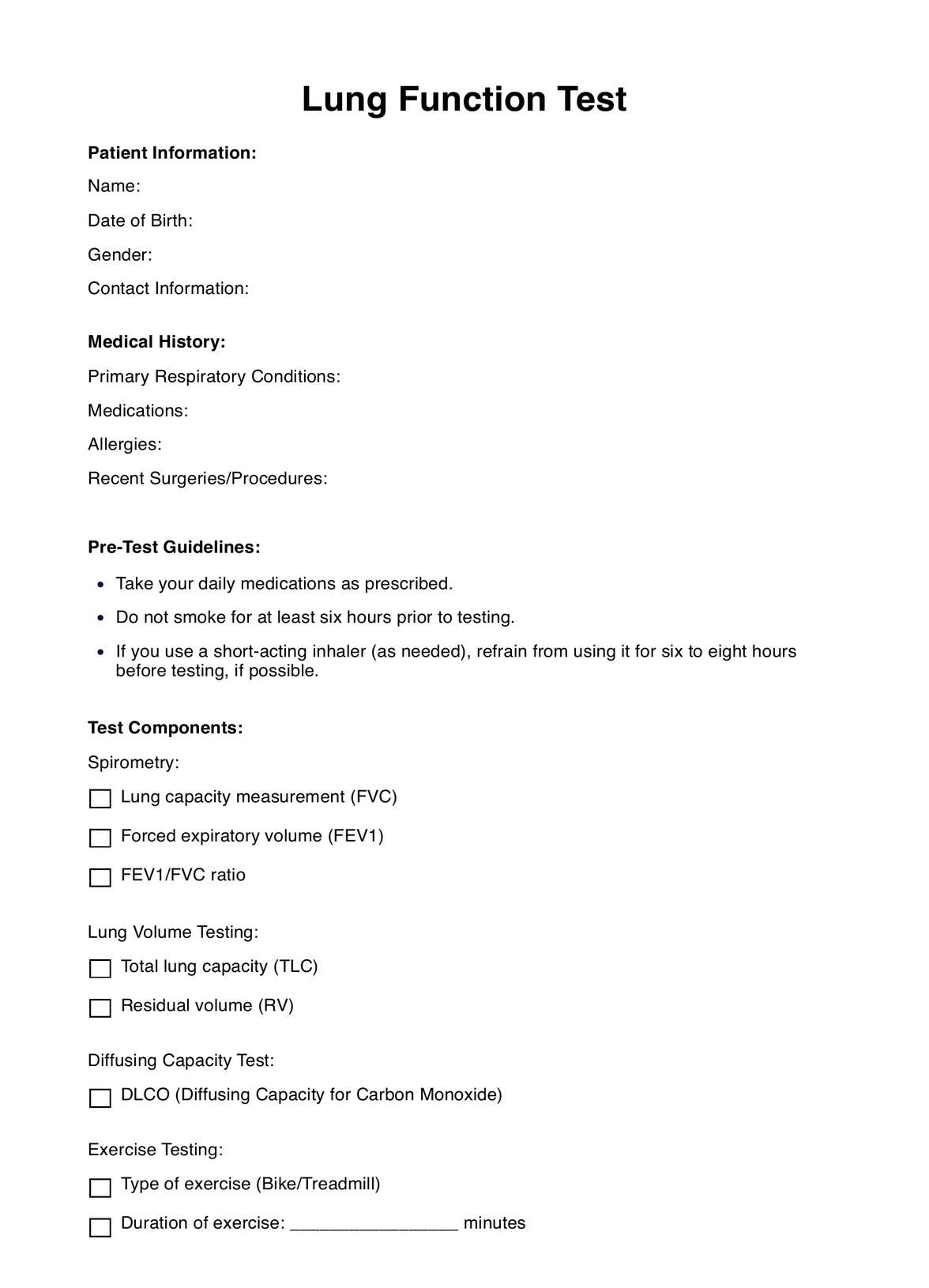A doctor, usually a pulmonologist or primary care physician, requests a Lung Function Test if they suspect a respiratory issue or want to monitor a known lung condition.

Lung Function
Looking to optimize lung care? Discover the essentials of Lung Function Test for healthcare professionals. Explore diagnostic insights and patient well-being.
Use Template
Lung Function Template
Commonly asked questions
During a Lung Function Test, you'll breathe into a machine called a spirometer, which measures how much air your lungs can h
A Lung Function Test typically takes 15 to 30 minutes, although it may vary depending on the specific tests needed and the patient's ability to cooperate.
EHR and practice management software
Get started for free
*No credit card required
Free
$0/usd
Unlimited clients
Telehealth
1GB of storage
Client portal text
Automated billing and online payments











